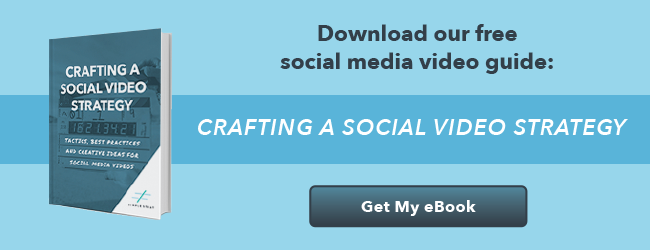“One cheese steak coming up! That’ll be $100.” A hundred-dollar sandwich is sure to get people talking. And that’s exactly what one Philly cheesesteak chef wanted.
Jonah Berger uses this example from the Barclay Prime restaurant in Philadelphia in his book, Contagious: Why things catch on. Berger, a marketing professor at Wharton, compiled research and created a framework to help creatives come up with viral content. It has six
If you haven’t had a chance to read this book yet, you should definitely add it to your list. Everyone wants their content to go viral and when it comes to creating viral content for your video marketing efforts, Berger’s six STEPPS are a perfect place to start.
Video content is one of the most shareable mediums, but it has to strike a chord with your audience first. We’re going to take each of the STEPPS and apply them to video content creation.
Let’s get started!
SOCIAL CURRENCY
Content that has social currency can be defined as content that improves the social status of those that share it. Think about the last thing that you shared or reposted on social media. Did you want to spread the word about a cause that you feel strongly about? Or maybe it was a game or contest that you
When you’re coming up with ideas for your next video, try to find a topic that focuses on a remarkable element of your brand, utilizes a game atmosphere, or makes people feel like an insider.
Just think of all the contests you see scrolling through your feed. It works, right? Another great way to give your video some social currency is by using influencer marketing. Viewers can connect with your influencer and see that if it’s good enough for that person, it must be good enough for them too.
TRIGGERS
Triggers are exactly what they sound like. They’re the content pieces that trigger a thought in your mind when you see them. Your goal should be to associate your brand with a trigger that people will encounter often.
One great example is Rebecca Black’s hit, Friday. Every Friday you will see video clips, gifs, and memes that are all pulled from her music video. While this content is viral, it also doesn’t mean that you only think of it when you see it. Anytime someone says Friday in our office, we cringe knowing that at any second Rebecca’s song could start blaring from a computer.
Geico also hit the jackpot with this in their Caleb the Camel series that highlighted Hump Day. Every Wednesday their original video gets MILLIONS of shares. It still holds true today- we know we aren’t the only ones who use the hump day Bitmoji.

EMOTION
The third principle Berger presents is emotion. It’s simply defined as when we care, we share. When you use emotion as your driver, you should ask yourself “Why would they care?” three times to answer for people who are for, against, and neutral to the position you’re presenting.
Cute puppy videos, angry political rants, and educational warnings of current events are constantly re-shared. The highest performing types of content are those that induce high arousal: anger, awe, and excitement.
Our favorite example hits two of those markers. Remember the Budweiser Super Bowl commercial where the puppy gets sad when his owner doesn’t come back after a night at the bar? Oh yeah, this hits both awe and excitement before the minute-long ad is up.
Do this for your company by proving that your software can save lives, or that without your product people could be at risk. Emotion causes you to really button up the story behind your position.
PUBLIC
When your content is public it means more than just being seen by everyone. The principle of public encourages people to take action in a publicly visible and replicable way.
The Ice Bucket Challenge is a gold star winner for this concept. You saw millions of people, influencers, and bored college kids alike posting their own Ice Bucket Challenge to their social feeds. There was more than one reason this challenge went viral, but when it comes down to it, most of us did it because everyone else was doing it too.
This concept is even applied outside of marketing. If you’ve ever been a waiter, bartender, or the like, you’ve probably started your tip jar with a few bills of your own. If other people see that there are tips in the jar, they’re more likely to tip.
Monkey
PRACTICAL VALUE
Practical value is one concept that nearly everyone can apply to their strategy. Your content should be news viewers can use. Since everyone can benefit from practical value, you’ll want to make sure yours is done in a short, straightforward way that pulls your viewers in and solves their problem.
These types of videos are always in your feed. They’re those listicles, infographics, and guides. Tasty capitalized this trend and hit it out of the park.
STORIES
Last but definitely not least is the principle of stories. People tend to think in terms of narratives, not information. Use your brand to create a story that is valuable to viewers. A good story can also leverage the principles of social currency, emotion, and practical value.
Stories are also one of the best ways to show authenticity in your brand. You produce a story about a featured product and follow it through its journey from the shelf to the consumer. Highlight your products or services in a way that shows benefits to your customers without overwhelming them with features of the product.
Your story should be able to be told without mentioning your brand, but your brand should be inherently present. Dove does a really good job of this with their “Real Beauty” campaign:
CONCLUSION
Coming up with video content doesn’t have to be rocket science if you follow Berger’s six simple "STEPPS": give your content Social currency, make it Trigger a reaction, play on your viewer’s Emotions, encourage people to make it Public, provide Practical value, and tell a Story.
PS- here’s why that cheesesteak cost $100. It’s got everything from Kobe beef to lobster to truffles. It even comes with a little bottle of champagne. Barclay’s chef hit the nail on the head and people won’t stop sharing their experience with this sandwich.
What’s your favorite viral video? We’d love to see it, drop the link in the comments below!



